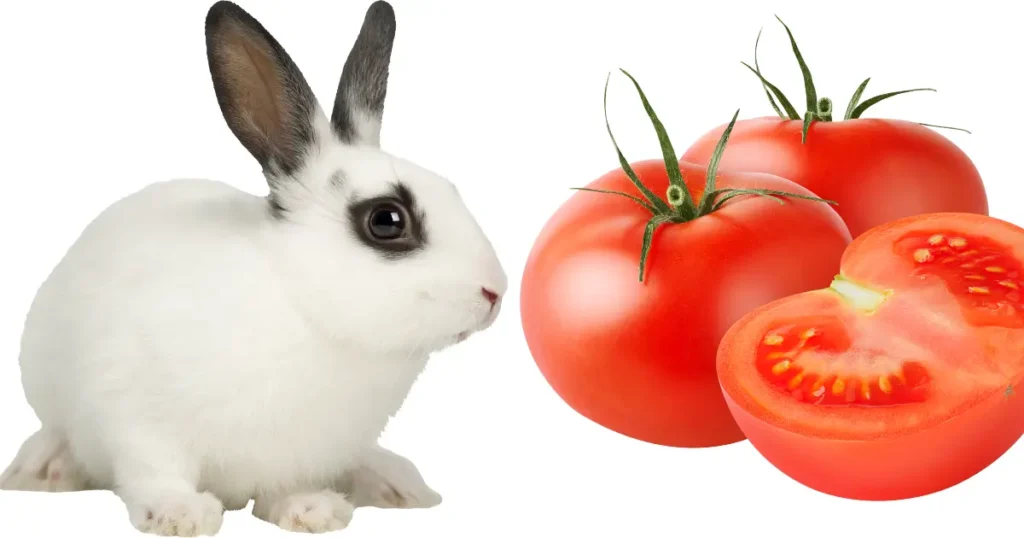#1 – Asian Vine Snake
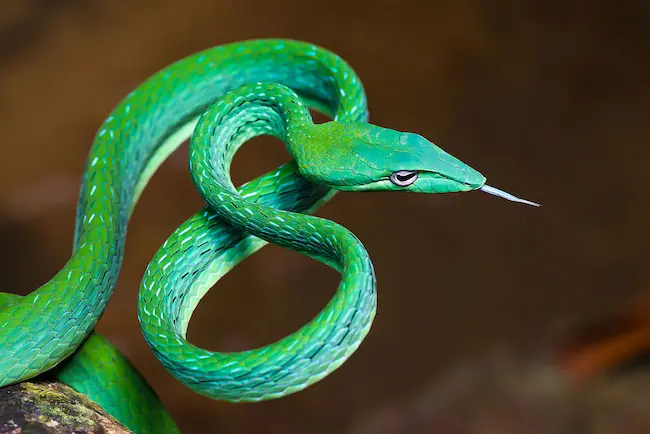
The body form is extremely slender with a long, pointed, projecting snout which is rather more than twice as long as the eye. Adult colouration varies from light brown to dull yellow-green and often a startling fluorescent green.
#2 – Blue Racer Snake

Blue racers often have creamy white ventral scales, dull grey to brilliant blue lateral scales, and pale brown to dark grey dorsum. They also have characteristic black masks, relatively large eyes, and often have brownish-orange rostral scales (snouts). Unlike adults, hatchlings and yearlings (first full active season) have dorsal blotches that fade completely by the third year; however, juvenile patterning is still visible on the venter until late in the snake’s third season.
#3 – Eastern Coral Snake

Micrurus fulvius, commonly known as the eastern coral snake, common coral snake, American cobra, and more, is a species of highly venomous coral snake in the family Elapidae. The species is endemic to the southeastern United States. It should not be confused with the scarlet snake (Cemophora coccinea) or scarlet kingsnake (Lampropeltis elapsoides), which are harmless mimics. No subspecies are currently recognized.
#4 – Green Tree Python

The green tree python (Morelia viridis) is a species of snake in the family Pythonidae. The species is native to New Guinea, some islands in Indonesia, and the Cape York Peninsula in Australia. First described by Hermann Schlegel in 1872, it was known for many years as Chondropython viridis. As its common name suggests, it is a bright green snake that can reach a total length (including tail) of 2 m (6.6 ft) and a weight of 1.6 kg (3.5 lb), with females slightly larger and heavier than males.
#5 – Iridescent Shield tail

Melanophidium bilineatum, commonly known as the two-lined black shieldtail or iridescent shieldtail, is a species of snake endemic to India. This species was known from only three specimens and very little information is available of it in the wild.
#6 – Red Headed Krait
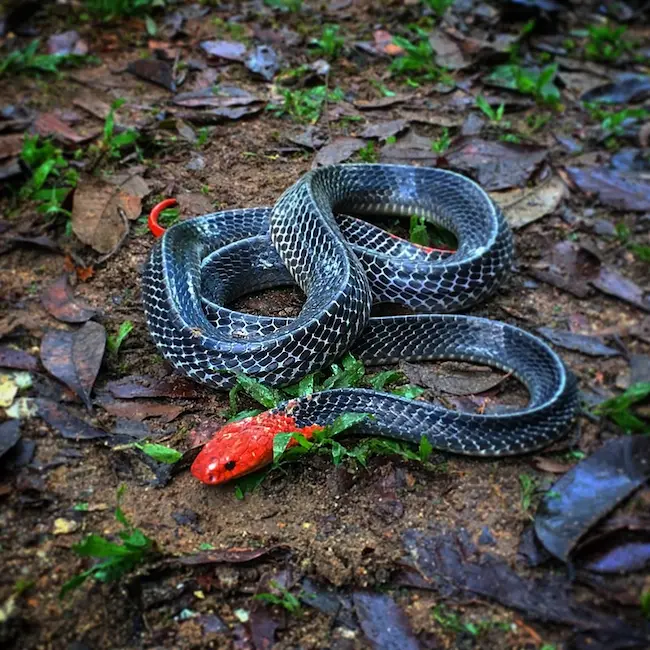
The red-headed krait (Bungarus flaviceps) is a large venomous elapid snake with dramatic coloration. The red-headed krait can grow to a length of up to 2.1 metres (7 ft). It lives in lowland rain forest, including those on islands, but it is considered uncommon. It feeds primarily on specific snakes, probably semiaquatic and fossorial snakes. In Southeast Asia, the red-headed krait occurs in Malaysia, Thailand, South India and Indonesia (Sumatra), with a subspecies in Borneo. The venom potency is little-studied, as bites from this species are extremely rare.
#7 – Formosan Odd-Scaled Snake
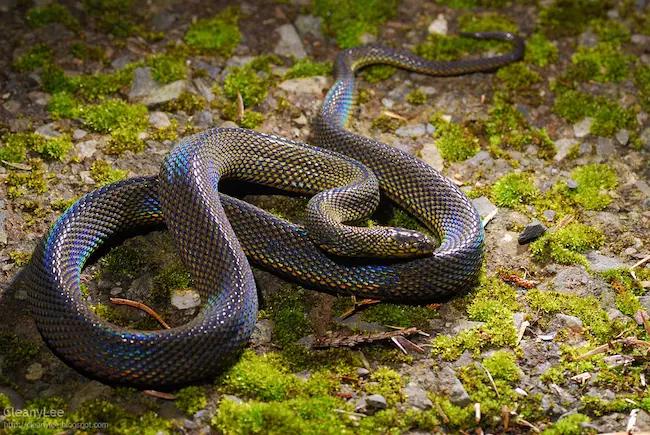
Achalinus formosanus, common name Formosan odd-scaled snake or Taiwan burrowing snake, is a non-venomous snake in family Xenodermidae that is found in Taiwan and in the southern Ryukyu Islands (Japan).
#8 – Honduran Milk Snake
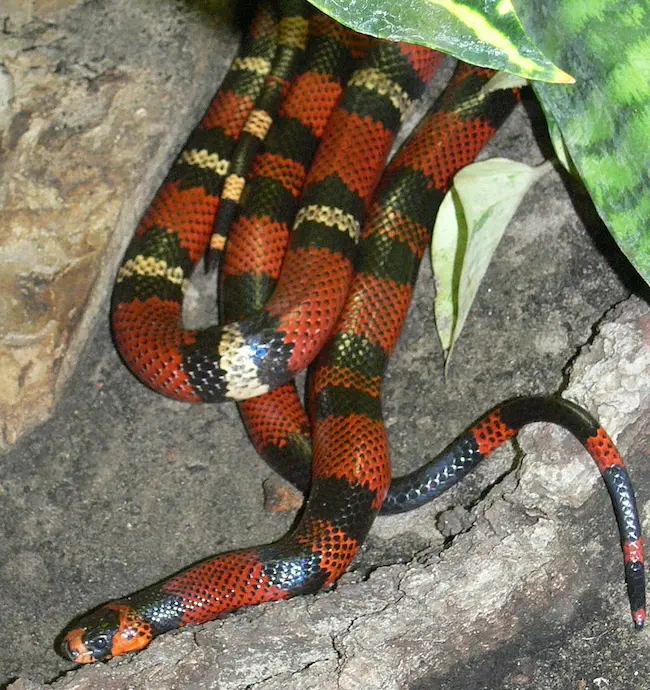
Lampropeltis triangulum hondurensis, commonly known as the Honduran milk snake, is an egg-laying subspecies of nonvenomous colubrid snake. It is one of the more commonly bred milk snakes in captivity and is one of the larger milk snakes, reaching a length of 5 feet.
#9 – Brazilian Rainbow Boa
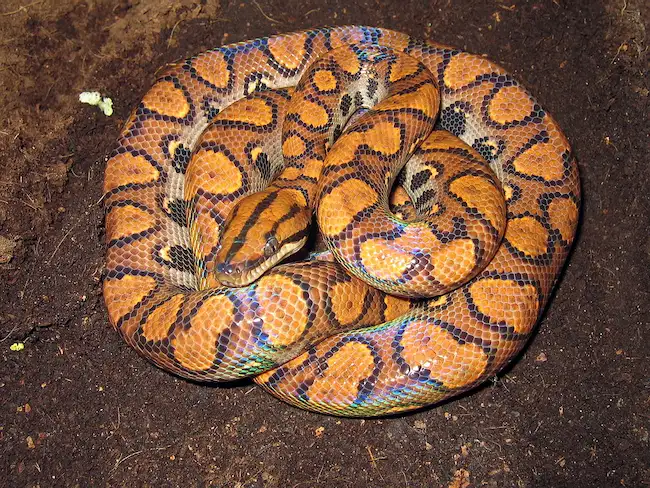
The rainbow boa (Epicrates cenchria) is a boa species endemic to Central and South America. A semi-arboreal species (not only do they climb in they wild but also proven in captivity), it is known for its attractive iridescent/holographic sheen caused by structural coloration. Five subspecies are currently recognized, including the nominate subspecies described here.
#10 – San Francisco Gater Snake
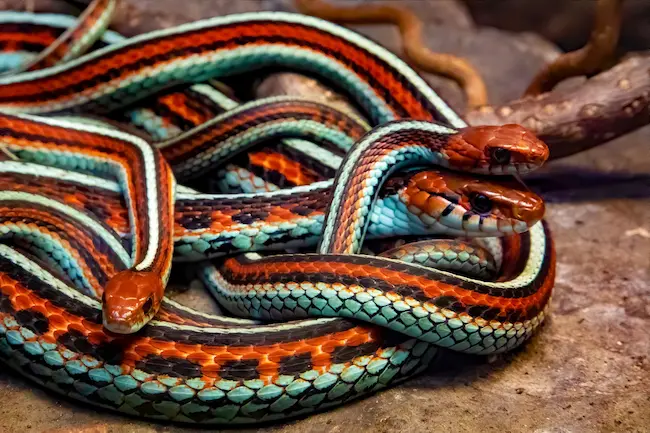
The San Francisco garter snake (Thamnophis sirtalis tetrataenia) is a slender multi-colored subspecies of the common garter snake. Designated as an endangered subspecies since the year 1967, it is endemic to San Mateo County and the extreme northern part of coastal Santa Cruz County in California.
